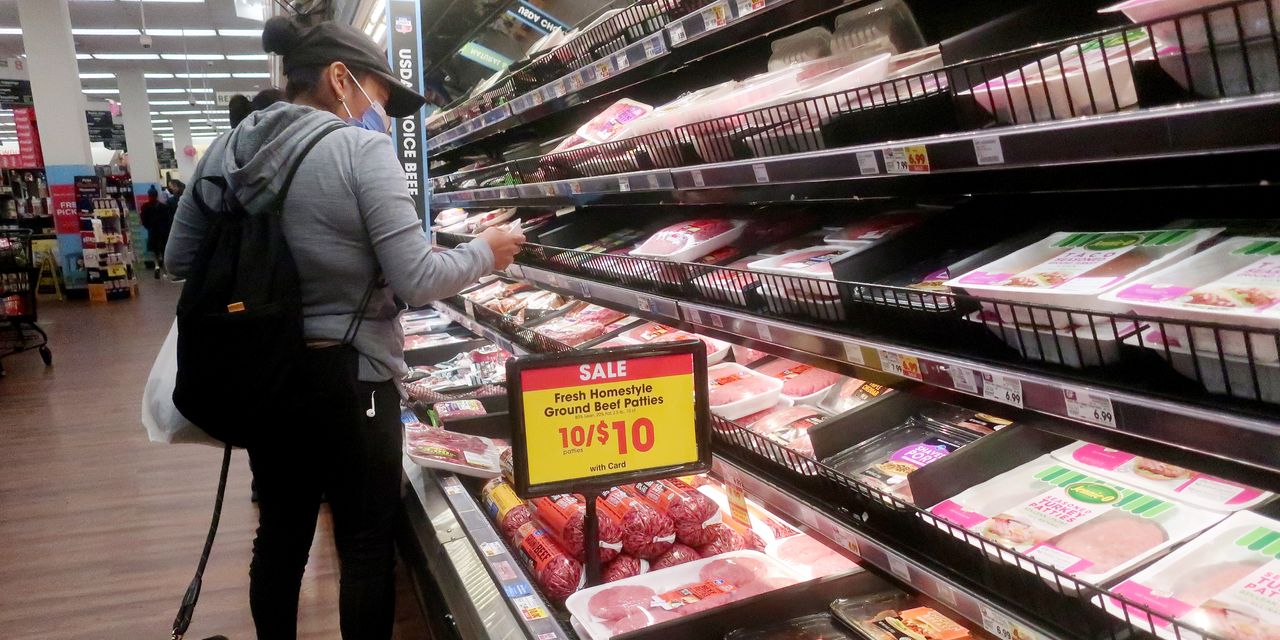The best of times or the worst of times? Looking at the numbers, with unemployment hovering at a record low, one would assume the former. But sentiment on Main Street USA is distinctly downbeat, making a dickens of a dilemma for Washington.
As for Wall Street, the mantra of “bad news is good news” is being invoked because negative developments could bring interest-rate reductions, which usually boost asset prices.
But although the American public is feeling out of sorts about the economy, things might not be bad enough for the Federal Reserve to cut rates, notwithstanding the markets’ hope that Jerome Powell & Co. will resume spiking the proverbial punch bowl later this year.
The University of Michigan’s latest sentiment survey, out Friday, shed light on consumers’ dour mien. The index plunged by 5.8 points, to 57.7, far below both economists’ consensus estimate and recent readings in the low-60 range. Their assessment of current conditions fell by 3.7 points, to 64.5, and expectations for future conditions plunged by 7.1 points, to 53.4.
The university attributed the falloffs in part to “the proliferation of negative news about the economy, including the debt crisis standoff.” The drop in the jobless rate to 3.4%, the lowest level since the 1960s, evidently was superseded by the (so-far fruitless) effort to avoid the first-ever default by the U.S.
The Biden administration is feeling the brunt of this lousy mood. You have to go back to the early 1950s and Harry Truman’s second term to find a presidential approval rating of just 37% while joblessness is this low,
Bank of America’s
strategist team, led by Michael Hartnett, writes in a client note.
As for consumer sentiment, the Michigan survey shows inflation’s pernicious effect on purchasing power, Joshua Shapiro, chief U.S. economist at MFR, points out in a note. Despite higher pay and job gains, real weekly earnings slid 1.1% in the 12 months through April, the Bureau of Labor Statistics has reported.
Consumers don’t think inflation will be transitory, to use that outmoded term. The Michigan survey finds that they expect inflation to run at 3.2% for the next five to 10 years, the highest rate since March 2011. That contrasts with the market’s sanguine longer-term forecast, derived from Treasury inflation-protected securities.
The five-year break-even inflation rate (the difference between yields on the five-year T-note and the corresponding TIPS) is just 2.14%, near its one-year low and within spitting distance of the Fed’s 2% inflation target. The 10-year break-even ratealso is close, at 2.20%.
But consumers evidently don’t believe the market’s message. And with high prices making them depressed, it’s “maybe not a good idea for the Fed to pause [rate increases] with inflation [at] 5%,” the BofA strategists opine. In that case, the risk for June may be another month of economic data pointing to rate hikes, they add.
However, federal-funds futures see an 83% probability that the central bank will hold rates steady next month in its new range of 5%-5.25%, according to the CME FedWatch tool. In July, the odds favor the Fed standing pat (a 58.5% probability), but with a 31% chance of a quarter-point cut and a 10.4% probability of an equal-sized increase. But by September, the odds are firmly skewed toward cuts, by roughly a 2-to-1 margin.
That would defy history. Fed rate decreases have been extremely rare whenever the unemployment rate has been below 4%, according to a report by Strategas’ Ryan Grabinski and the rest of his strategist team.
Only six of the 124 fed-funds rate reductions since 1971 occurred with a sub-4% jobless rate; two took place during the worst of the Covid-19 crisis in March 2020, while three happened in 2019 with inflation running below the Fed’s 2% target. The other instance came on Jan. 3, 2001, as the economy was headed toward the recession that followed the dot-com bust.
As the BofA team observes, inflation remains sticky, with the consumer price index 4.9% above its level a year ago and the core (ex food and energy) rate at 5.5%.
Even if the CPI registers monthly increases of just 0.2% throughout 2023, year-over-year inflation would likely still be near 4%, according to Evercore ISI’s equity and derivatives strategists, headed by Julian Emanuel. That would be at odds with the market’s pricing in three Fed cuts by December, they add.
In all, this looks like a summer of discontent on Main Street and Wall Street, as well as on Pennsylvania Avenue and Capitol Hill.
Write to Randall W. Forsyth at [email protected]
Read the full article here













